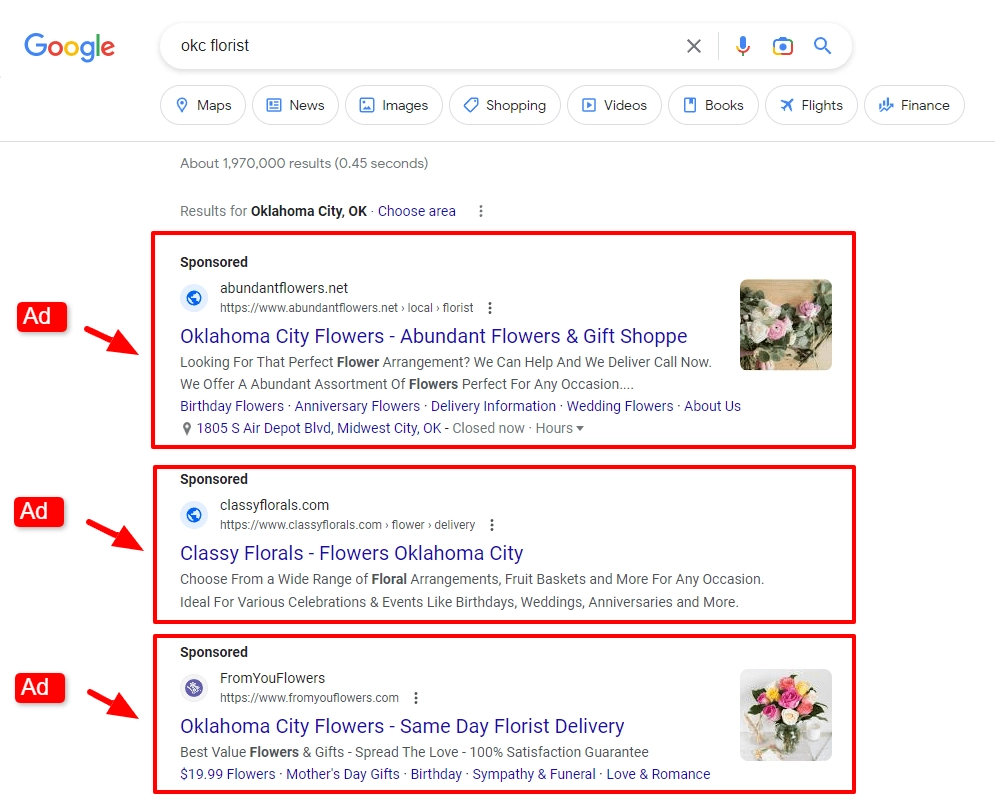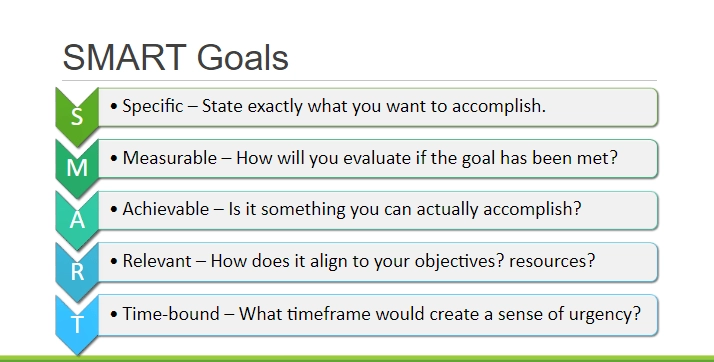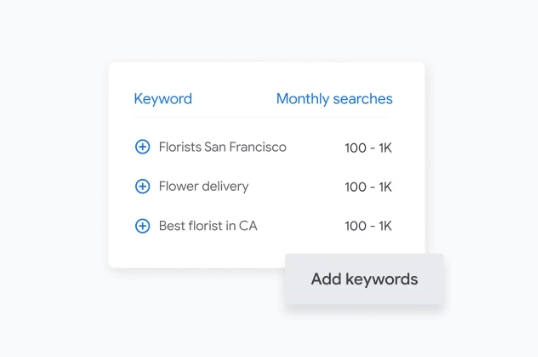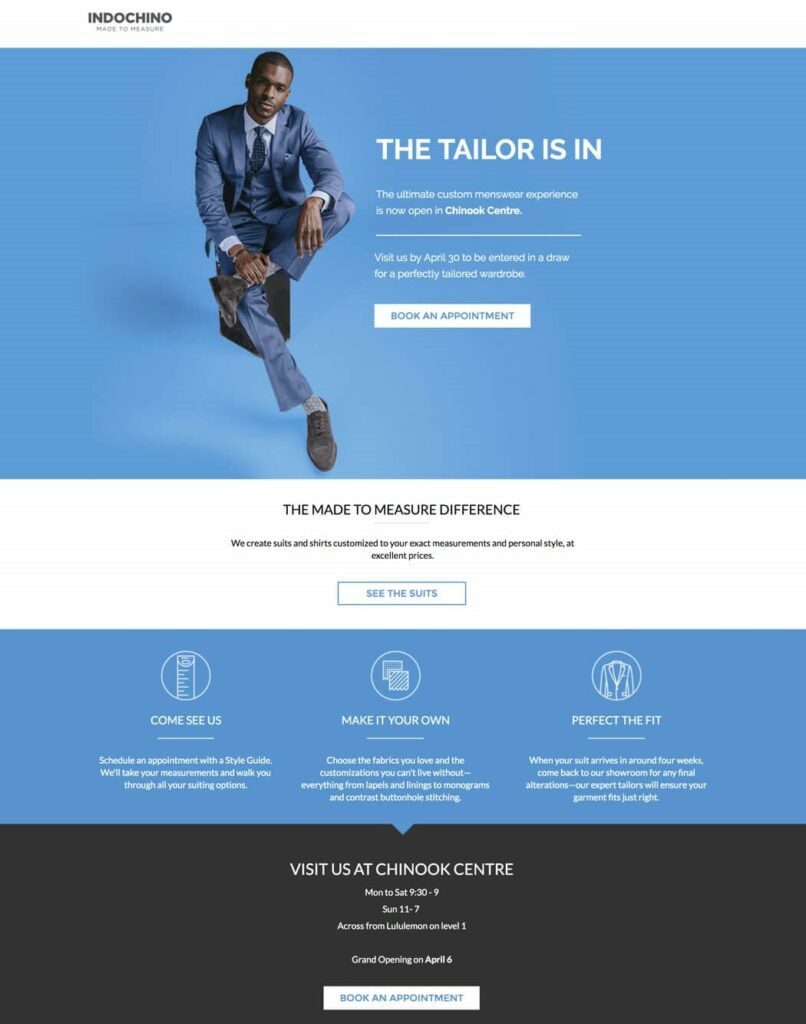Ready to get started with pay-per-click advertising?
We don’t blame you.
PPC ads give organizations the opportunity to capitalize on an integral component of the online experience: Search activity.
By targeting the keywords your audience searches for most, you can create a personalized campaign that can help you reach your sales and demand generation goals faster.
With that said, let’s take a closer look at what pay-per-click advertising is, if it’s effective, and a few other frequently asked questions. We’ll also show you how to get started with pay-per-click advertising in just a handful of steps.
Ready to learn more?
Let’s begin.
- What Is Pay-Per-Click Advertising?
- How Effective Is Pay-Per-Click Advertising?
- What is an example of a PPC Ad?
- What Is the Downside to PPC?
- How Long Should a PPC Campaign Last?
- How to Get Started With PPC Ads
- Wrap up
What Is Pay-Per-Click Advertising?
Put simply, pay-per-click (PPC) ads are part of an advertising structure where you pay any time a user clicks on one of your ads. While there are various kinds of PPC ads, the one we’ll be reviewing today is paid search ads via Google Ads.
How Effective Is Pay-Per-Click Advertising?
Google mentioned it conservatively estimates that for every dollar businesses spend on Google Ads, they’ll receive eight dollars in profit. Pretty effective if you ask us!
What Is an Example of a PPC Ad?
You come in contact with PPC ads anytime you search for something on Google. These are text ads or shopping ads that appear in various sections of the search engine results page (SERP).
Here are some of the most common ones you’ve probably noticed when performing a search query:

As you can see in the image above, these specific PPC ads are shown ahead of the organic search results to reach searchers as quickly as possible.
What Is the Downside to PPC?
While physically setting up a PPC ad is pretty simple, it takes skill, practice, and active monitoring to ensure your campaigns stay on the right track. That means you may be investing quite a bit of time in trial and error as you learn how to optimize and improve your ads to get the best results.
How Long Should a PPC Campaign Last?
On average, it can take three months for a PPC campaign to work — and the reason is simple: You need to let the data build.
During the first three months of your PPC campaign, it’s essential to scrutinize the data you gather from your ads so you can personalize and refine your approach accordingly.
While you’ll do your due diligence to gather insights from the start, the best advertising data will always come directly from your ad campaigns.
However, you can run shorter ad campaigns, and start seeing positive results almost instantly.
How to Get Started With PPC Ads
Now that we’ve covered some of the top FAQs, let’s take a look at a basic overview of how to get started with PPC ads.
Step 1: Get Clear On Your Campaign Objective
What do you hope to achieve with PPC advertising? Are you looking to generate leads, encourage sign-ups, or drive sales?
Here are some other examples of reasons you might choose PPC ads:
- Increase inquiries
- Increase site traffic
- Raise brand awareness
Be as clear as possible when outlining your campaign objective so there’s no room for misinterpretation among your marketing team.
List your end goal, the reason you chose it, and how it can help your business grow in the long run. You might consider following the SMART goal framework, shown in the image below.

Here’s an example:
Goal: We’d like to increase traffic to our pillar blog post about small business HR by 35% in three months.
Reason: We’d like to build awareness and trust with our top-of-the-funnel small business prospects that are having a hard time managing HR tasks.
How this can help our business grow: This gives our organization an incredible opportunity to build awareness around one of our top HR solutions for small businesses. We’ve already established a strong presence with mid-level businesses and enterprises. This will give us a chance to take advantage of the low-hanging fruit we’ve been missing out on.
By the end of 2025, we’d like to be known as a full-service HR solution for small businesses, mid-level businesses, and enterprises.
Step 2: Outline the Audience Segment You’re Targeting
Get clear on the advertising options you should invest in by understanding the target audience segment you’re targeting.
- Who are they really?
- What segment are they a part of?
- Where are they in the funnel?
- What do they need?
- How does targeting them line up with your objective?
For instance, if your goal is increasing subscriptions to your course monetization platform, then you might decide to focus on your bottom-of-the-funnel EdTech audience segment that’s been having difficulty boosting their online course revenue.
From here, you’ll need to consider their buyer’s journey. What are they searching for to help them get the support they need? Bidding on these specific phrases can help you maximize your sales opportunities as best as possible.
While you might think starting with relevant keywords related to your industry is the way to go, what you really need to focus on is search intent.
These keywords are typically based on navigational, transactional, or informational intent.
For instance, if you’re targeting searchers that want to buy, you’ll focus on transactional keywords, such as “buy course monetization app” or “purchase course monetizer”.
If you’re targeting searchers that want to get to a certain resource or page, you’ll focus on navigational keywords, such as “course templates” or “course builder”.
And finally, if you’re targeting searchers that want to learn something, you’ll focus on informational keywords, such as “how long does it take to monetize a course?” or “how to build a profitable online course”.
Be sure to conduct research so you’ll know which terms your audience segment is looking up most.
Step 3: Finalize and Set the Keywords You’d Like to Bid On
After conducting research, finalize your keyword list and set the terms you’d like to bid on.
Google recommends using its AI feature “broad match” with “Smart Bidding” to reach searches in line with your goals.

The reason? If you refine your targeting too much from the beginning, you may end up reaching a smaller audience, which means less data for you to inspect and apply toward refining your campaign.
By starting a bit wider and then narrowing your target, you’ll be able to back up your decisions with data so you can focus on your high-value prospects.
Google also recommends setting precise bids for every search using its Smart Bidding machine-learning feature so you can connect with customers without sacrificing your budget.

Smart Bidding auto-sets bids for you so you can save time, reach your objectives, and maximize your return on investment (ROI).
Step 4: Write Your Ad and Link It to a Powerful and Persuasive Landing Page
Hire a PPC copywriter with a strong portfolio to craft a compelling ad and a powerful and persuasive landing page for your campaign.

While you can attempt to take care of the writing yourself, copywriters are pros at turning words into dollars. Without the support of a professional sales writer, you may be left spinning your wheels in endless trial and error.
If you’re A/B testing, targeting multiple audiences, or setting up multiple campaigns, Google recommends using its responsive search ads AI feature to help you put the right messages in front of the right people.

To no surprise, Google also recommends including site links and images in your ads to make them more helpful to searchers.
Step 5: Monitor Your Ad and Improve Keywords as Needed
Possibly the most important step in this entire process is keeping a close eye on your ad and improving your keywords as needed.
By analyzing what’s working and investing more money there, you can avoid paying for an ad that’s a drain on your company’s budget, time, and resources. You can use one of the best notion widgets to easily analyze and track your KPI metrics without manually updating anything.
Remember, the best advertising data is going to come from your campaign itself.
As you monitor your campaign, keep track of everything that’s working — whether that’s visuals, sales copy, specific keywords, or anything else. After careful scrutiny, turn your tracking sheet into a formula you can apply toward your current ad campaign as well as future campaigns that will have similar goals.
Once you’ve hit that successful sales formula sweet spot, spend more money. Rinse and repeat.
Wrap up
And there you have it. We hope you enjoyed today’s beginner’s look at pay-per-click advertising.
While there’s more you can explore on the subject, we hope this entry-level guide has given you a clearer understanding of what PPC ads are and how to get started using them.
Need more support? Google offers the option to get in touch with an ads expert that can offer one-on-one guidance, help with selecting the right keywords, personalized recommendations, and insights on how to tailor your budget and media plan.
Well, that’s it for now — don’t forget to save this article for reference!
Here’s to your success!
FAQs
What is pay-per-click advertising?
Pay-per-click advertising is a type of digital advertising where advertisers pay each time someone clicks on their ad. Ads can appear on search engines like Google, as well as on social media platforms and other websites.
How much does it cost to use Google Ads?
The cost of using Google Ads can vary depending on a number of factors, including the industry you’re in, the competition for keywords, and the type of ads you choose to run. However, you can set a daily campaign budget to help control costs.
How do I create a Google Ads account?
To create a Google Ads account, go to the Google Ads website and click “Start Now.” You’ll need to enter some basic information about your business and set up a payment method to fund your ads.
How do I target my ads to specific audiences?
Google Ads allows you to target your ads to specific audiences based on factors like location, demographics, interests, and behavior. You can also use keywords to target your ads to people searching for specific products or services.
How can I track the performance of my ads?
Google Ads provides a number of tools to help you track the performance of your ads, including metrics like clicks, impressions, and conversions. You can use this data to optimize your campaigns and improve your return on investment (ROI).
___
Kyriaki Raouna is a Content Creator at LearnWorlds who writes about marketing and e-learning, helping course creators on their journey to create, market, and sell their online courses. Equipped with a degree in Career Guidance, she has a strong background and years of experience in education management, professional development, and career success. In her free time, she gets crafty and musical.

